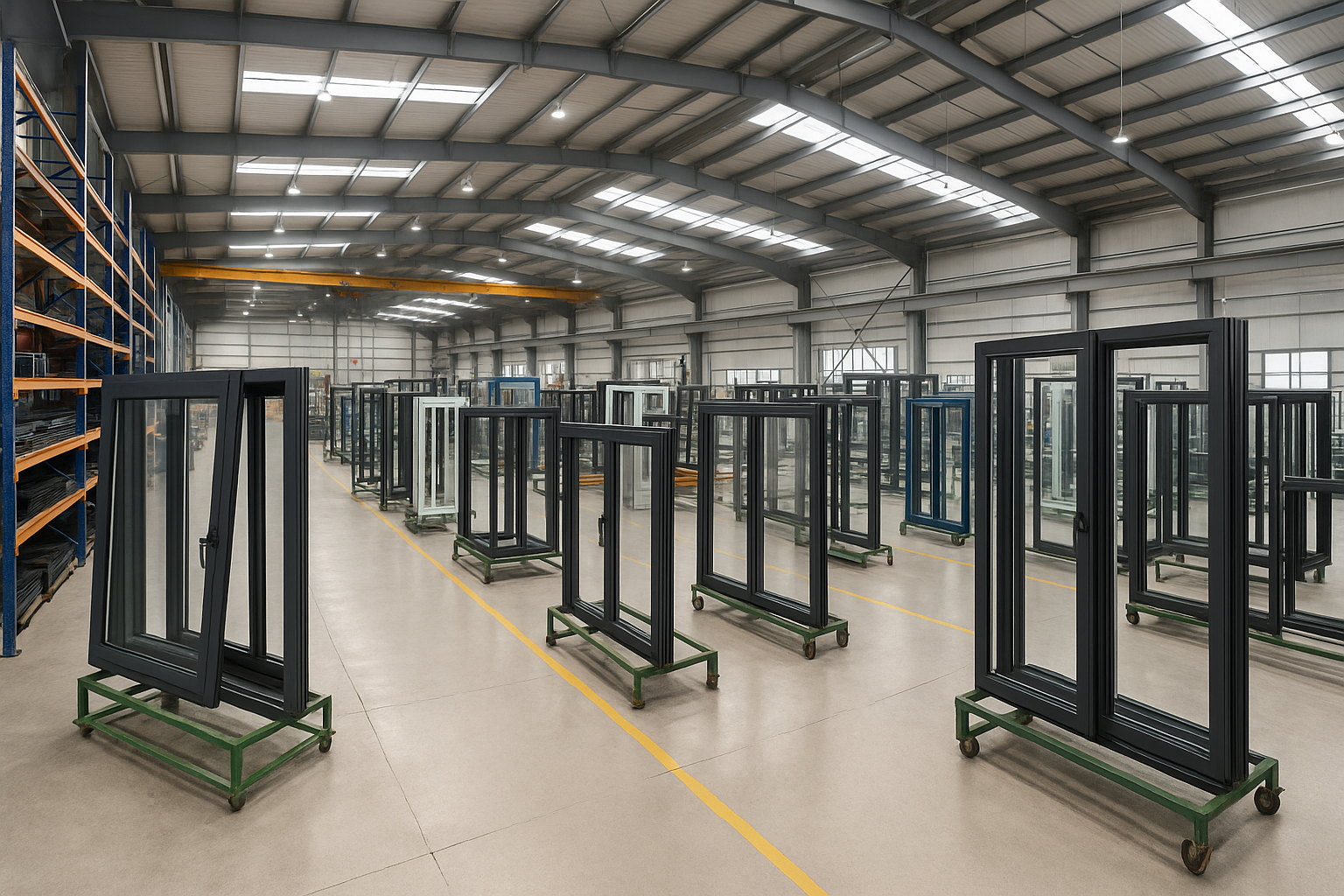
How aluminum windows are made?
Struggling to understand what goes into making aluminum windows? You’re not alone—it’s a process that blends advanced engineering with real-world experience.
Aluminum windows are made through a series of steps including alloy selection, extrusion, surface treatment, cutting, assembly, hardware fitting, glazing, rigorous quality checks, and final shipping. Each stage ensures strength, durability, and customizability for residential and commercial needs.
Curious about the drawbacks, step-by-step construction guide, reasons for corrosion resistance, or how they’re installed? Let’s break down everything you need to know about aluminum windows so you can make confident decisions—whether you’re a contractor, a dealer, a homeowner, or managing procurement for a major development.
What is the disadvantage of aluminum windows?
Even the best solutions have their downsides. If you’re deciding on materials for your next project, it’s important to know what you’re up against.
Aluminum windows can have poor insulation1, condensation issues2, potential corrosion3 in salty climates, higher costs4, less soundproofing, and scratch-prone surfaces if not expertly finished or specified.
Let me explain why these cons matter. While aluminum windows are prized for strength and style, the material does conduct heat well—meaning energy loss if not fitted with thermal breaks. I’ve seen cases where condensation creates long-term maintenance headaches, like mold or water stains, especially in colder climates or poorly ventilated rooms. Here’s a focused breakdown:
| Disadvantage | Explanation | Solution |
|---|---|---|
| Poor Thermal Insulation | Transfers heat/cold easily | Thermal breaks, double glazing |
| Condensation | Water droplets due to temperature difference | Better ventilation, coatings |
| Corrosion Risk | Sea air/salt can corrode untreated frames | Quality coatings (anodized/powder) |
| High Cost | More expensive than uPVC or vinyl | Long-term value, durability |
| Lower Soundproofing | Thinner material transmits noise | Use proper glass, seals |
| Surface Vulnerability | Scratches from tools or cleaning | Handle with care, tough coatings |
If you’re choosing aluminum, make sure your supplier is transparent about these risks and offers proven solutions, just like we do at Hoglad.
How to fabricate an aluminium window a step by step guide?
It might seem overwhelming at first, but every aluminum window5 follows a well-oiled process. I’ve seen firsthand how careful planning transforms a raw profile into a high-performance window.
To fabricate an aluminum window: consult on design, select materials, extrude and cut profiles, treat surfaces, assemble frames, install hardware and glass, inspect quality, and pack for delivery.
If you’re involved in project management or even ordering for your own home, knowing the process can be powerful. Here’s a stepwise guide based on what we do at Hoglad:
Stepwise Fabrication Table
| Step | Action |
|---|---|
| 1. Consultation | Review dimensions, design, and color with client |
| 2. Material Selection | Pick aluminum alloy, glass type, hardware |
| 3. Extrusion & Cutting | Extrude profiles and cut to precise length |
| 4. Surface Treatment | Anodize or powder-coat for durability and color |
| 5. Assembly | Join frames, add thermal breaks, square up |
| 6. Hardware Fit | Install hinges, locks, drainage, gaskets |
| 7. Glazing | Secure glass with glazing beads and sealants |
| 8. Quality Inspection | Check size, finish, operability, water/air tightness |
| 9. Packaging & Shipping | Protect and send to site |
Personally, I always insist on clear communication during these steps—nothing beats getting specs right the first time to avoid costly changes later.
Why do aluminium window frames not corrode after they are made?
Worried about rust or corrosion ruining your windows? You’re not alone. But modern aluminum window frames handle this problem with built-in defenses.
Aluminum window frames resist corrosion thanks to a natural oxide layer, anodizing, powder coatings, and alloy design containing anti-corrosion elements. Regular cleaning maintains this resistance for years.
Let’s look at what protects your investment:
Corrosion Resistance Features Table
| Feature | How it Protects | Maintenance Tip |
|---|---|---|
| Natural Oxide Layer6 | Forms instantly, prevents deeper attack | Avoid harsh chemicals |
| Anodizing | Thickens oxide layer, fights corrosion | Inspect for scratches |
| Powder Coating | Shields from UV, rain, salt | Keep clean and intact |
| Alloy Selection | Magnesium/silicon boost resistance | Use proven suppliers |
| Specialized Coatings | Extra for coastal/saline areas | Re-apply when necessary |
From my family factory days up to Hoglad’s export operation, I’ve seen how these treatments extend the life of windows in both city towers and beachfront villas. Choose a manufacturer who doesn’t cut corners on surface treatment—your windows should last decades, not years.
How are aluminium windows fixed to walls?
If you’ve ever wondered how aluminum windows go from the factory to a finished wall, rest easy—installation is a science rooted in experience and accuracy.
Aluminum windows are fixed using pre-drilled frames anchored with screws or brackets, then sealed with waterproof materials7 like silicone or EPDM rubber for airtight, durable installation.
Here’s how we get it right—even on challenging sites:
Window Fixing Process Table
| Stage | Details |
|---|---|
| 1. Site Prep | Check/clean opening, adjust size if needed |
| 2. Positioning | Align frame level, ensure equal spacing |
| 3. Anchoring | Attach using screws/anchors or brackets (lugs) |
| 4. Sealing | Apply silicone/EPDM seals for water and air tightness |
| 5. Testing | Adjust sashes, check for smooth operation and tight seal |
| 6. Final Touch | Clean area, review all seals and surfaces |
For tough weather zones—like coastal or mountain locations—pay extra attention to sealing and choose installers who understand the local challenges. In my experience, a good install is as important as the window itself for long-lasting comfort and peace of mind.
Ready to Upgrade?
We offer CE-certified, fully customizable double-glazed window systems—delivered globally.
💬 Chat on WhatsApp
Conclusion
In summary, aluminum windows are engineered for strength and longevity when manufactured and installed with care—just as we do at Hoglad.
-
Understanding poor insulation can help you make informed decisions about energy efficiency and comfort in your home. ↩
-
Exploring solutions for condensation can prevent long-term damage and improve indoor air quality. ↩
-
Learning about corrosion prevention can extend the lifespan of your windows and save on costly repairs. ↩
-
Understanding the cost factors can help you evaluate the long-term value of investing in aluminum windows. ↩
-
Explore the advantages of aluminum windows, including durability, energy efficiency, and design flexibility. ↩
-
Learn how the Natural Oxide Layer forms a protective barrier, enhancing the longevity and performance of aluminum products. ↩
-
Discover the top waterproof materials that ensure a reliable seal, enhancing the longevity and performance of your window installations. ↩
You may also be interested in:

Are aluminum windows expensive
Are aluminum windows expensive? If you’re weighing window options and costs have you nervous, you’re not alone—figuring out what’s worth the money can feel overwhelming, even for pros. Aluminum windows

Are aluminum windows better than upvc
Struggling to choose between aluminum and UPVC windows? Making the wrong choice could impact your budget, comfort, and even your home’s resale value. Aluminum windows offer unparalleled durability and a

Are aluminum windows good?
Ever wondered if aluminum windows are really a solid choice for your next project? With all the options out there, making the right pick can feel overwhelming. Aluminum windows stand

Hi there! I'm Thea, mom and hero to an adorable 5-year-old boy. By day, I'm a seasoned pro with 10 years in the window and door industry, going from sales to owning my own factory. Here to share what I've learned—let's grow together!
Contact with me
No-nonsense Guide for Newbies
- ✔Master mold basics quickly
- ✔Avoid costly beginner mistakes
- ✔Gain industry-ready insights
- ✔Boost technical understanding
- ✔Accelerate business growth
